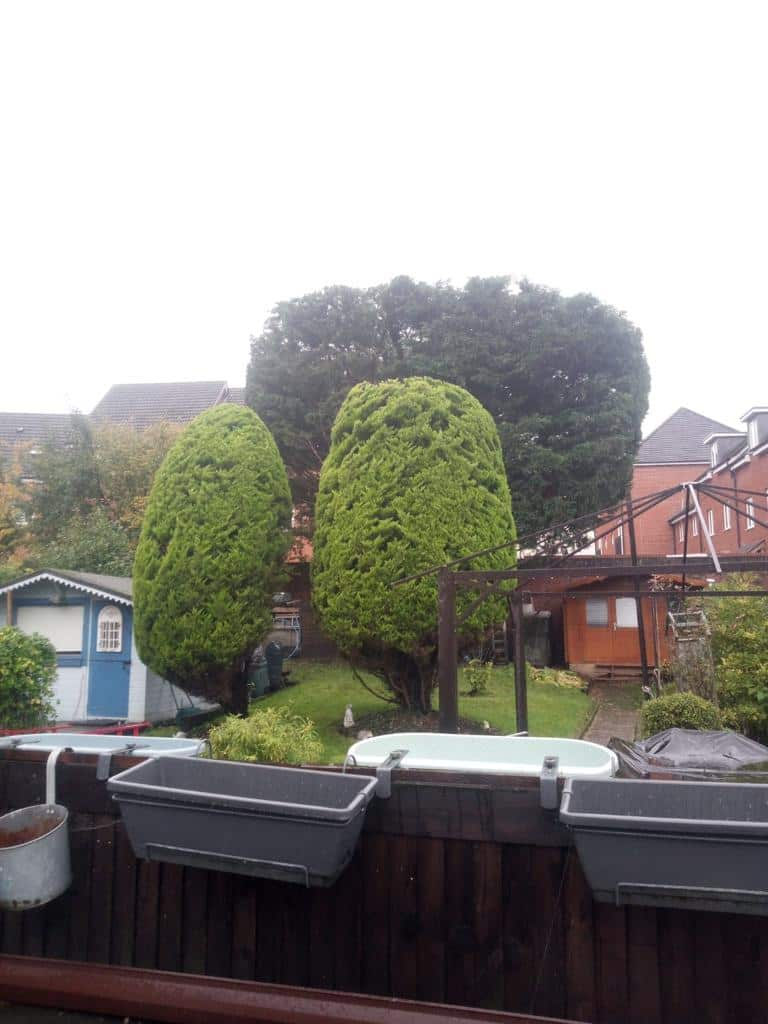Crown reduction is a tree surgery technique that involves reducing the size of a tree’s canopy by cutting back branches. It’s often used to maintain the health of trees, reduce the risk of damage, or improve the tree’s appearance. Despite its many benefits, crown reduction is surrounded by several myths that suggest it can be harmful to trees. At EM Tree Surgery Quedgeley, we specialise in providing professional tree care services in Quedgeley, Gloucestershire, and in this article, we aim to debunk some of the common myths surrounding crown reduction and clarify its actual impact on trees.
What is Crown Reduction?
Understanding the Technique
Crown reduction is the process of reducing the overall size and spread of a tree’s canopy by selectively cutting back branches, usually to the natural growth points. The goal is to decrease the height or width of the tree without compromising its health. This method is often employed when trees become too large for their location, pose a risk to nearby structures, or show signs of damage.
Unlike tree topping, which indiscriminately cuts back large sections of the canopy, crown reduction is a more precise and controlled approach that ensures the tree remains healthy and structurally sound after the surgery.
Myth 1: Crown Reduction Will Kill the Tree
Crown Reduction Does Not Kill Trees
One of the most common myths surrounding crown reduction is that it will inevitably kill the tree. In reality, when done correctly, crown reduction is not harmful and can actually benefit the tree by removing dead, diseased, or weak branches. This helps the tree focus its energy on healthy growth. The key to successful crown reduction is ensuring that it’s performed by a qualified tree surgeon who understands the specific needs of the tree species and its environment.
A professional tree surgeon will know the right amount of pruning to carry out to maintain the tree’s structural integrity while promoting healthy new growth. When done properly, crown reduction can actually extend the life of the tree by reducing the risk of limb failure, which is often caused by overgrown, weak branches.
Myth 2: Crown Reduction Leads to Increased Risk of Disease
Correctly Done, Crown Reduction Can Reduce the Risk of Disease
Some people believe that crown reduction makes a tree more susceptible to disease, but this is only true if the procedure is done incorrectly. If excessive cuts are made or the wrong branches are removed, it can leave the tree vulnerable to disease and pests. However, when a tree surgeon conducts crown reduction correctly, it can actually reduce the risk of disease.
By removing dead or diseased wood, crown reduction helps prevent the spread of infections and creates a healthier tree overall. It also ensures that the tree has good airflow and sunlight, which are both important for preventing fungal growth and pest infestations. Proper care during crown reduction allows the tree to heal faster and stay resilient against environmental stress.
Myth 3: Crown Reduction Results in Poor Tree Shape
Proper Crown Reduction Can Enhance the Shape of the Tree
Another myth is that crown reduction will ruin the natural shape of the tree. This concern often stems from the misconception that any form of pruning will result in an unattractive or poorly formed tree. In truth, a skilled tree surgeon can perform crown reduction in a way that preserves or even enhances the tree’s shape.
By selectively reducing the canopy and removing any asymmetrical or poorly placed branches, the tree can have a more balanced and aesthetically pleasing appearance. Crown reduction can also help maintain a tree’s health by eliminating overcrowded branches that block sunlight and prevent good air circulation, leading to a stronger and more vibrant tree.
Myth 4: Crown Reduction Is Only for Large Trees
Crown Reduction Is Beneficial for Trees of All Sizes
Many people believe that crown reduction is only necessary for large, mature trees, but this is not the case. While crown reduction is often used to manage the size of large trees, it can also be beneficial for smaller trees that are overgrown or at risk of damage. In fact, regular crown reduction as part of a tree’s overall maintenance plan can prevent it from becoming too large or out of control in the future.
For young or smaller trees, crown reduction can help guide the tree’s growth, encouraging it to develop a strong structure and a healthy canopy. Regular pruning ensures that the tree maintains its shape, prevents future problems, and stays manageable as it grows.
Myth 5: Crown Reduction Causes Stress to the Tree
Professional Crown Reduction Minimises Stress
Some individuals believe that crown reduction causes significant stress to trees, but in reality, when it is performed by a qualified professional, the procedure causes minimal stress. A well-executed crown reduction removes only the necessary branches while ensuring that the tree retains its overall health and vitality. It’s important to note that all trees experience some level of stress during any form of pruning, but the stress is often temporary, and the benefits far outweigh the risks.
A tree surgeon will take care to perform the reduction during the correct time of year to minimise the impact on the tree’s health. Proper aftercare, such as cleaning and sealing any cuts, can also help the tree recover quickly and reduce the risk of infection.
Conclusion
Crown reduction is a highly effective tree surgery technique when performed correctly, and it is not harmful to trees as long as it is carried out by a professional tree surgeon. By debunking these myths, we hope to have shown that crown reduction can be an excellent way to manage the size, health, and appearance of your trees. It helps prevent potential damage from overgrown branches, reduces the spread of disease, and can even enhance the tree’s natural shape.
At EM Tree Surgery Quedgeley, we are committed to providing expert tree care services in Quedgeley, Gloucestershire. If you think your tree could benefit from crown reduction or other tree surgery services, don’t hesitate to contact us for a professional assessment. Our experienced team is here to ensure your trees remain healthy, safe, and beautiful for years to come.
Call us on: 01452 941 558
Click here to find out more about EM Tree Surgery Quedgeley
Click here to complete our contact form and see how we can help with your trees needs.

